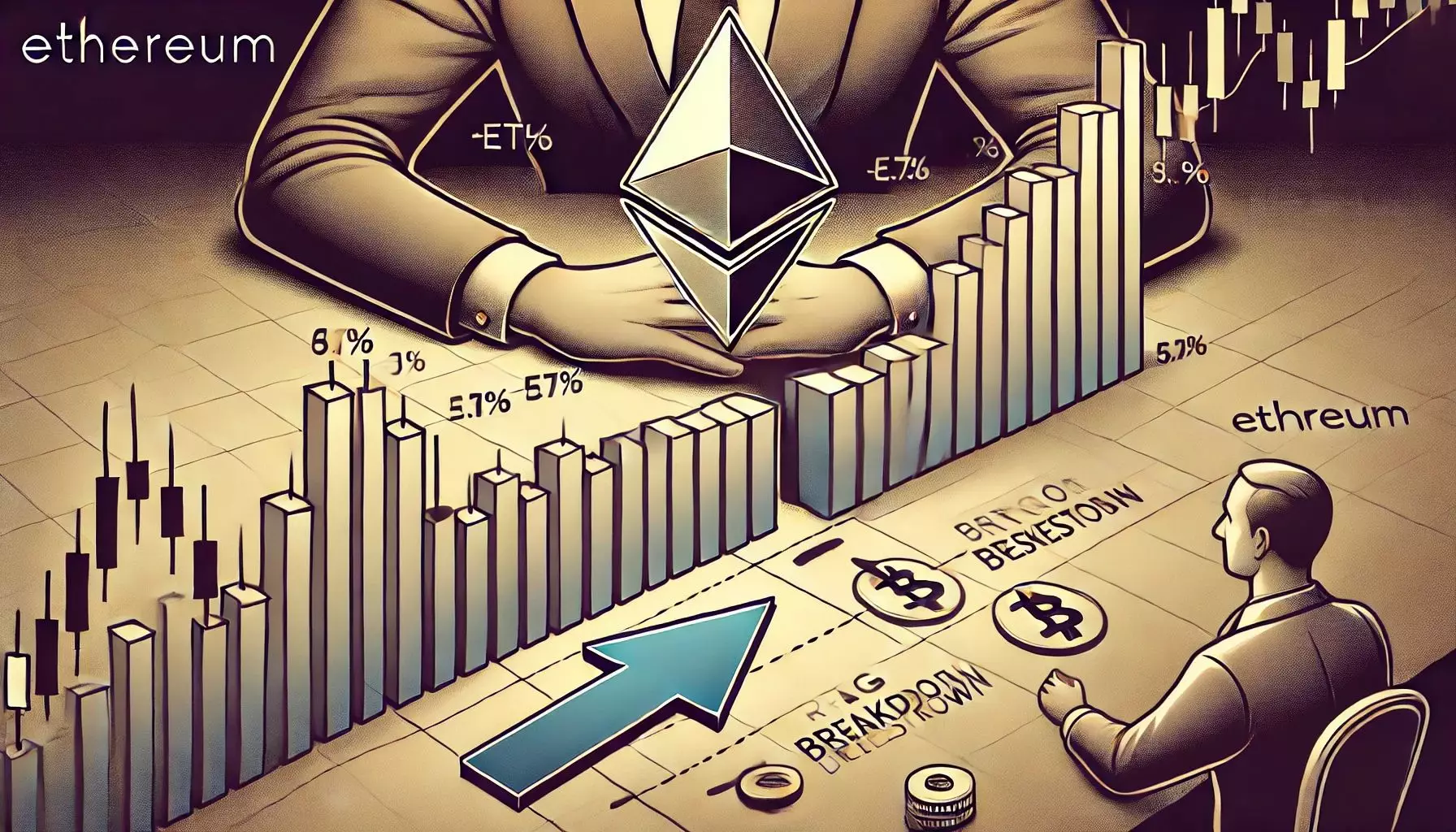Ethereum, once a symbol of revolutionary potential within the cryptocurrency landscape, is now grappling with a stark reality: a disturbing price stagnation accentuated by heightened selling pressure. Currently hovering around $1,580, this digital currency stands a striking 21% below the crucial $2,000 threshold, a figure that, once upon a time, was celebrated as a sign of robust market confidence. The erosion of its value is alarming not just for holders but for the entire crypto sector, as Ethereum’s plight reflects a broader malaise that permeates this speculative environment.
Investor sentiment appears fragile; trading volumes have dwindled, and the market finds itself in a quagmire of indecision. With Ethereum’s recent behavior showcasing an alarming consolidation phase, both buyers and sellers seem incapacitated. The question remains—what will it take for Ethereum to break free from this purgatory?
Macro Forces and Ethereum’s Timid Trajectory
Economic uncertainty is an ancient enemy of emerging markets, and Ethereum is no exception. The ongoing geopolitical tensions between the United States and China weigh heavily on investor psychology, contributing to hesitancy surrounding risk assets, including cryptocurrencies. President Trump’s trade maneuvers have not only stunted Ethereum’s growth but have also permeated global trading ecosystems, resulting in a collective aversion to uncertainty.
The unresolved nature of these trade relations looms large over the crypto market, forcing traders to hover on the sidelines. Ethereum, once a beacon of innovation promising decentralized solutions, now finds itself in a precarious position where it’s vulnerable to the ever-evolving landscape of international relations. Even the recent announcement of a temporary tariff pause has failed to bring back optimism. If there’s anything that this period teaches us, it’s that broader economic factors can overshadow innovation, a bitter pill for ETH holders.
The Compression That Bodes a Storm
Recent analysis by industry expert Daan sheds light on the glaring compression in Ethereum’s price movements. What this means is deceptively simple yet profoundly impactful: when volatility diminishes, the market often gears up for a drastic shift—upward or downward. This gripping “calm before the storm” syndrome tends to culminate in explosive price movements, but without clear buy signals, investors are left to grapple with uncertainty.
Currently, traders are likely checking their mental portfolios, balancing hope against the weight of underwhelming performance metrics. Without a definitive breakout from its compression zone, Ethereum risks remaining stagnant, which leads one to ponder whether it is a matter of will or mere fate.
The Pivotal Levels to Monitor
For bulls to reclaim control of the market, Ethereum must decisively break through conceptual levels that linger on the horizon like mirages—namely, the 4-hour 200-day moving average and the exponential moving average. These indicators act as dynamic resistance, which means that their successful breach could signal renewed enthusiasm among traders and shift the momentum toward a more favorable trajectory. Yet, the existential question remains: is the interest genuine, or just a fleeting whisper of hope?
The crucial test lies not just above these indicators but at the $2,000 level—a psychological barrier that embodies the disparity between aspirations and reality. Should Ethereum reclaim its former glory and transcend this significant threshold, we may witness a rehabilitation of market sentiment that could catapult ETH into another bullish cycle. Conversely, a dip below $1,550 could lead to a domino effect, dragging it into even deeper corrective territory.
Caught in a Web of Ambiguity
As Ethereum oscillates within this constraining band characterized by support and resistance, it epitomizes the larger struggles faced by cryptocurrencies in general. A seeming lack of conviction from both parties in the marketplace inflicts psychological burdens on traders and investors, creating a paradox wherein fear of losing out competes with the dread of further loss.
In a world where technological advancement meets speculative trading, Ether’s failure to generate momentum may well symbolize a disheartening reality that innovation alone isn’t a panacea for bullish market conditions. Ethereum’s recent saga presents a cautionary tale for those who dare play the high-stakes game of crypto trading: volatility stalks the unprepared, while opportunity rewards those willing to brave the storm of uncertainty.
Navigating this turbulent landscape will require more than mere patience—it demands perseverance, insight, and a keen understanding of the shifting currents that govern market dynamics. In many ways, the fate of Ethereum isn’t solely a reflection of its underlying technology; it exists as a mirror to the world’s broader economic zeitgeist.


Leave a Reply